News
EPJ D Highlight - Investigating the link between N₂O ionization and ozone depletion
- Details
- Published on 02 August 2024
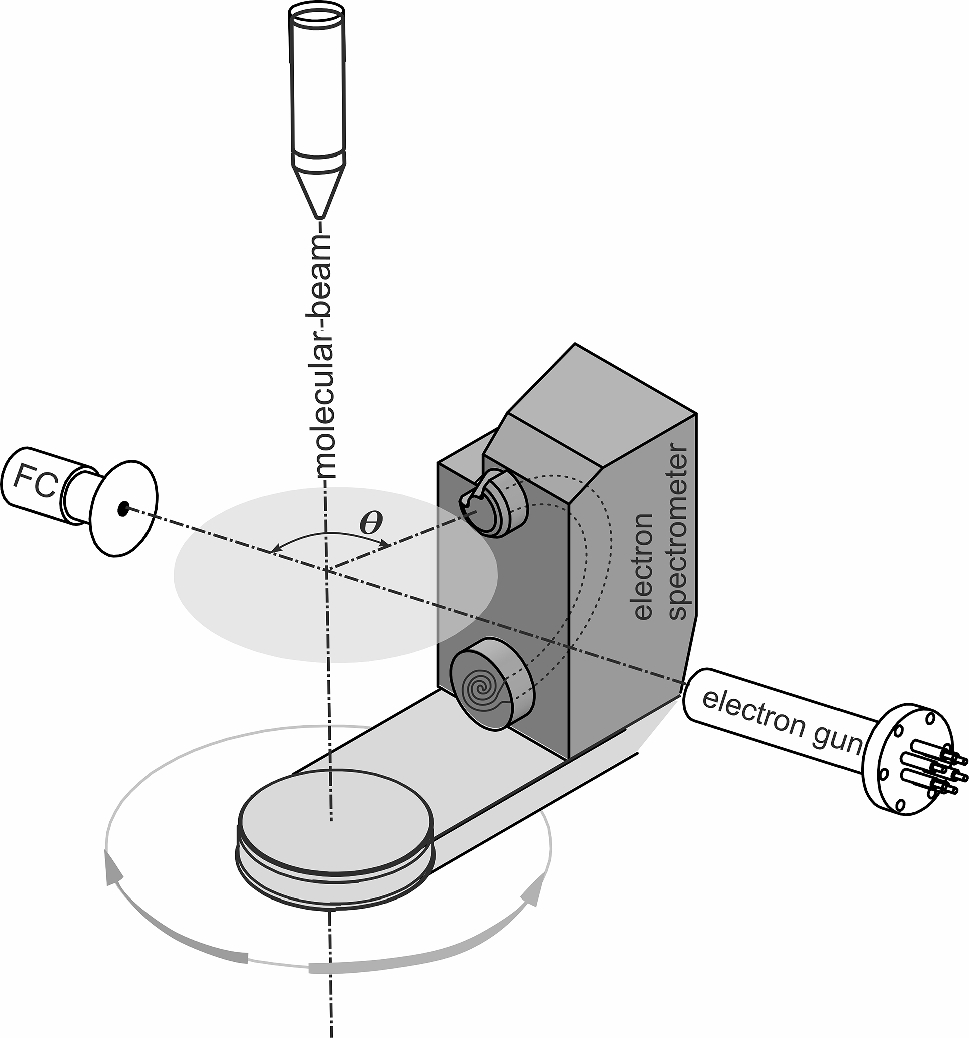
Detailed measurements of the electron-impact ionization cross-section of nitrous oxide shed new light on how Earth’s ozone layer could be depleted by future manmade emissions.
Man-made emissions of nitrous oxide (N2O) are rapidly increasing globally and are predicted to pose a growing threat to Earth’s ozone layer. In the 1970s, it was discovered that N2O in the upper atmosphere can trigger ozone-depleting reactions through its interaction with low-energy electrons. However, the full impact of this process on the ozone layer remains poorly understood.
New research published in EPJ D, led by Mareike Dinger at the national metrology institute of Germany (PTB) in Braunschweig, Germany, provides extensive experimental data on the interaction between N2O and these low-energy electrons. Their measurements could offer deeper insights into the influence of man-made N2O emissions on the future state of Earth’s ozone layer.
EPJ D Highlight - Identifying useful emission lines in the sun’s outer atmosphere
- Details
- Published on 02 August 2024
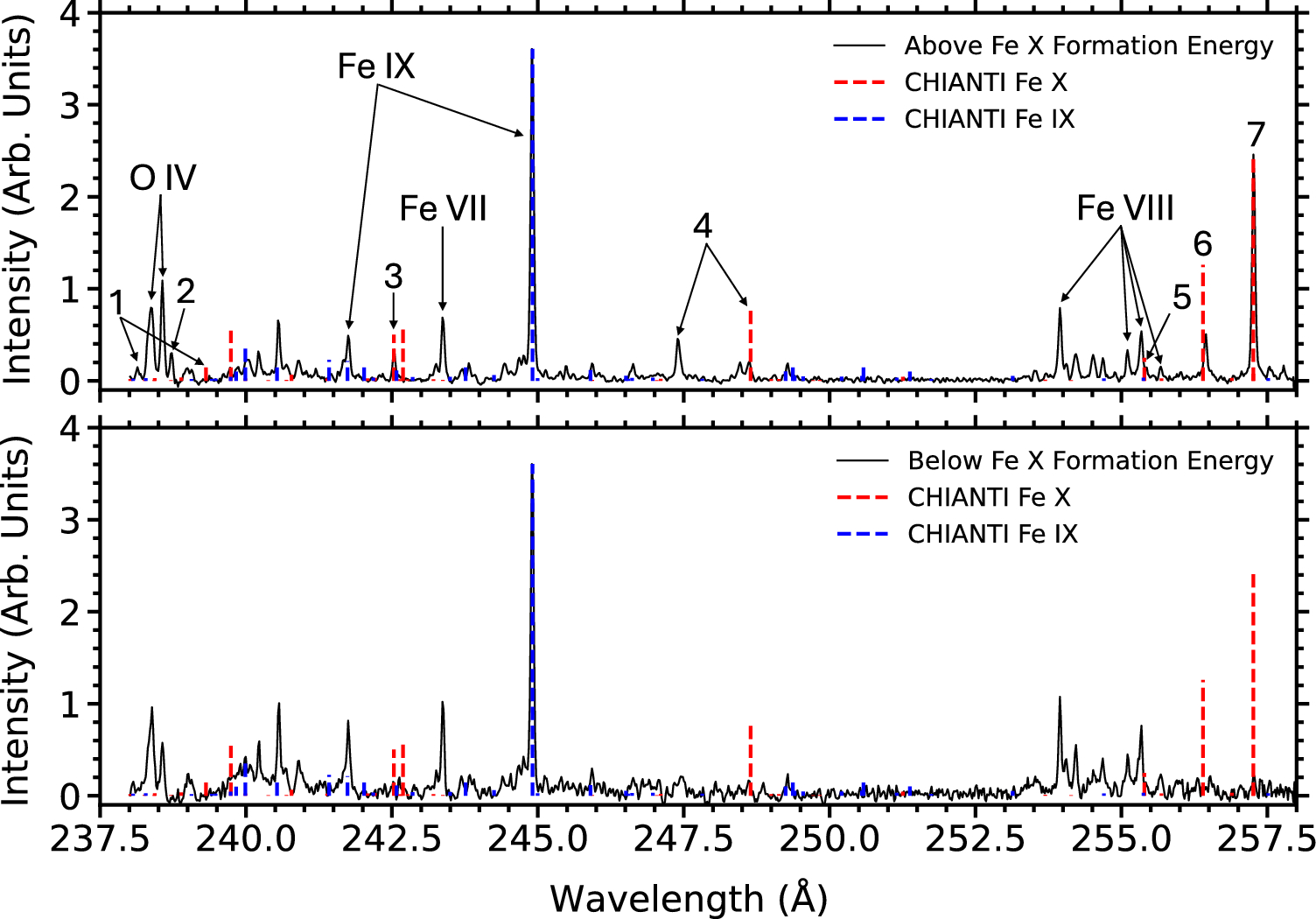
Experiments reveal deeper insights into the emission lines created by two key ions in the sun’s outer atmosphere
When studying the solar spectrum, researchers often search for specific emission lines: prominent wavelengths emitted by ions as their electrons transition from higher to lower energy levels. Emission spectra of two iron ions, Fe IX and Fe X, are particularly useful for studying the sun’s outer atmosphere. However, both of these spectra contain emission lines that can’t yet be matched with known electron transitions, limiting the information which can be gathered from them.
EPJ H welcomes new Editors-in-Chief after merger with Quaderni
- Details
- Published on 31 July 2024
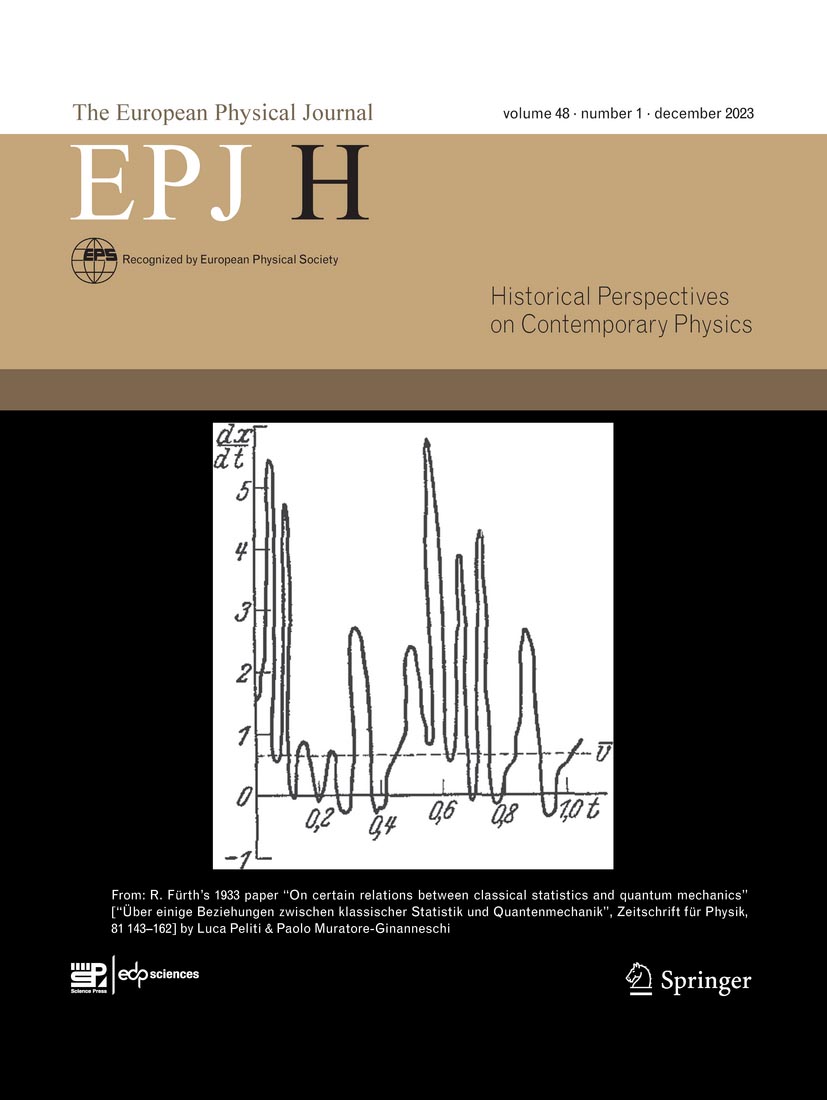
Effective 1 July 2024, EPJ H: Historical Perspectives on Contemporary Physics has merged with one of the very few other journals exclusively devoted to the history of physics, the Quaderni di Storia della Fisica. The new Editors-in-Chief, Alexander Blum and Matteo Leone, take the baton from the previous Editor-in-Chief, James D. Wells, and his predecessors Wolf Beiglböck, who founded EPJH in 2010 and was responsible for shaping its profile, Francesco Guerra and Michael Eckert.
With the merger EPJH has undergone a major editorial reorganization and in their Editorial Alexander Blum and Matteo Leone describe how they see this as an opportunity for the journal’s growth and development.
EPJ E Highlight - α-SAS: Improving measurements of complex molecular structures
- Details
- Published on 12 July 2024
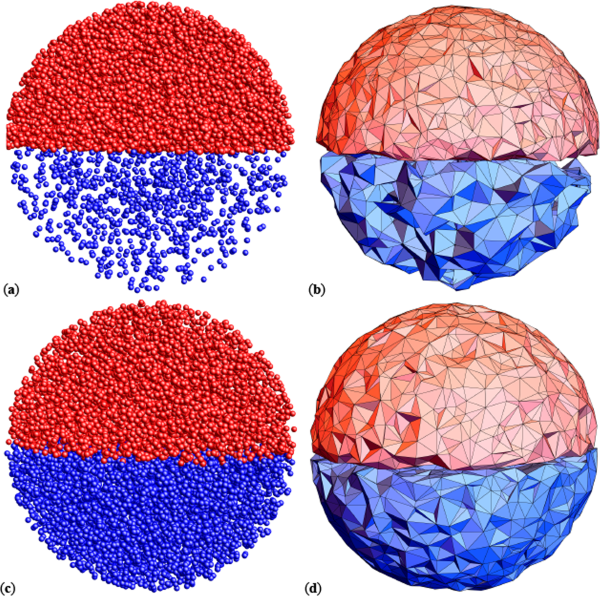
Integrating small-angle neutron scattering with machine learning algorithms could enable more accurate measurements of complex molecular structures.
Small-angle scattering (SAS) is a powerful technique for studying nanoscale samples. So far, however, its use in research has been held back by its inability to operate without some prior knowledge of a sample’s chemical composition. Through new research published in EPJ E, Eugen Anitas at the Bogoliubov Laboratory of Theoretical Physics in Dubna, Russia, presents a more advanced approach, which integrates SAS with machine learning algorithms.
EPJ H Highlight - The importance of the 1949 Florence conference “StatPhys I” to physics
- Details
- Published on 11 July 2024
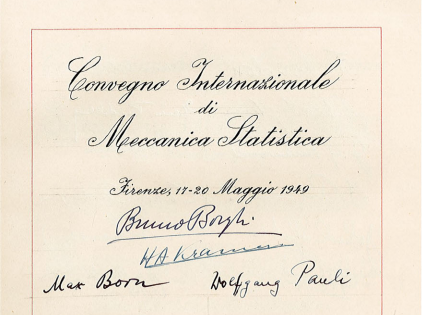
The first international conference devoted to statistical mechanics was also of great importance to scientific reconstruction in post-war Italy.
International science conferences are now a fixture in the calendar of most scientists. These face-to-face meetings allow researchers to gather and exchange the latest information, thus maintaining the scientific culture of the relevant disciplines by emphasising that no one researcher is an island.
Statistical physics, or statistical mechanics as it was once known, is the branch of physics that deals with the application of statistics to large systems, usually groups of particles. It, too, has its own international conferences, the origin of which goes back to the 17th to the 20th of May 1949 when around 70 physicists from eight countries met in Florence, Italy. This conference would later come to be regarded as “StatPhys I” with StatPhys referring to International Conferences on Statistical Physics, the series of conferences organised by the IUPAP.
A new paper published in the journal EPJ H: Historical Perspectives on Contemporary Physics discusses the importance of the 1949 statistical mechanics conference not just for physics but also for Italy’s post-war reemergence. The paper is authored by Roberto Lalli, Assistant Professor at the Polytechnic University of Turin and Visiting Scholar at the Max Planck Institute for the History of Science, and Paolo Politi, of the Florence Unit of the Institute for Complex Systems, who teaches statistical physics at the University of Florence.
EPJ Web of Conferences Highlight - Quark Matter 2023 - 30th International Conference on Ultra-Relativistic Nucleus-Nucleus Collisions
- Details
- Published on 04 July 2024
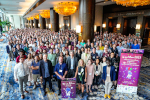
The 30th edition of the International Conference on Ultra-relativistic Heavy-Ion Collisions, Quark Matter 2023, was held in Houston, Texas, on September 4-9, 2023.
It marked the return of a fully in-person conference ever since the pandemic necessitated many conference series, including Quark Matter, to resume online or in hybrid format. Nearly 700 participants from 28 countries, half of them graduate students and young scientists, contributed to a broad program highlighting recent results from theory and experiments conducted at a range of accelerator facilities. New opportunities from theoretical developments, experiment upgrades, and new experiments at existing or new facilities were discussed in more than 500 oral and poster presentations.
EPJ AP: Vincent Mauchamp new Editor-in-Chief
- Details
- Published on 04 July 2024

The publishers of The European Physical Journal Applied Physics are pleased to announce the appointment of Professor Vincent Mauchamp as new Editor-in-Chief.
Vincent Mauchamp is Professor at the department of Physics of the University of Poitiers. After a master’s degree in Condensed Matter Physics, he received a PhD in materials science from the University of Nantes where he worked on the characterization of lithium-ion battery electrodes using Electron Energy-Loss Spectroscopy. After a post-doc at the INSA Lyon, he joined the Pprime institute in 2007. His research activities are now mainly focused on the electronic structure, electronic properties and functionalization of two-dimensional transition metal carbides - so-called MXenes - as probed by different kinds of spectroscopies (EELS, XPS, optical spectroscopy, XAS, etc), and combined to Density Functional Theory simulations.
EPJ AP: Philippe Moreau new Editor-in-Chief
- Details
- Published on 04 July 2024

The publishers of The European Physical Journal Applied Physics are pleased to announce the appointment of Professor Philippe Moreau as new Editor-in-Chief.
Philippe Moreau is an alumini of the Ecole Nationale Supérieure des Industries Chimiques (ENSIC in Nancy, France : "Grande Ecole" specialised in Chemical Engeneering). During his PhD at University of Nantes, his focus became redirected towards the study of materials and their characterisation through advanced spectroscopies (XAS, EELS...) and electronic structure calculations. While at the Cavendish Laboratory (Cambridge, England) in his postdoctoral position under the supervision of Prof. A. Howie, he developped an expertise in Electron Energy-Loss Spectroscopy in a Transmission Electron Microscope. He became Assistant Professor at the University of Nantes in 1998 and full Professor in 2019 and teaches inorganic chemistry, electron microscopy and, photon and electron based spectroscopies. He is now assisting in managing a group of 50 members developing research on materials for storage and conversion of energy.
EPJ E Topical Issue: Festschrift in honor of Philip (Fyl) Pincus
- Details
- Published on 26 June 2024
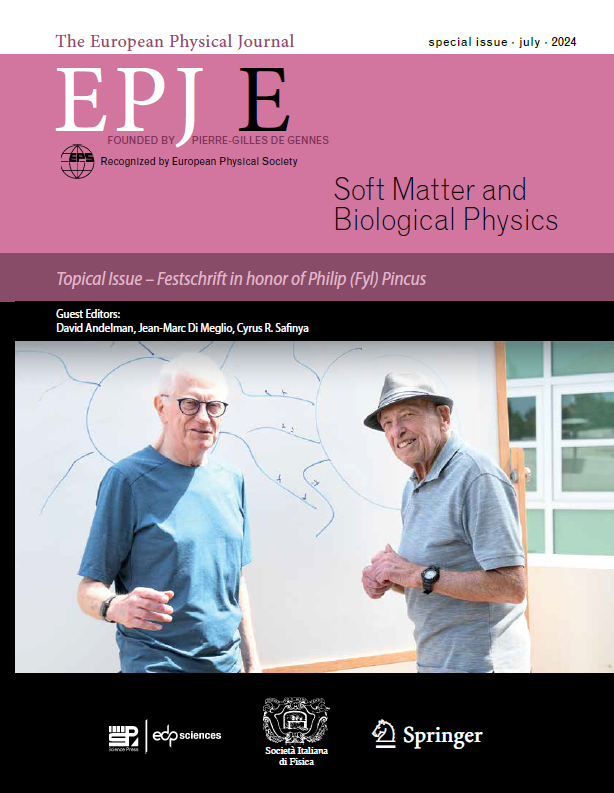
Guest Editors: David Andelman,
Jean-Marc Di Meglio, and Cyrus R. Safinya
This topical issue comprises 49 contributions covering a broad range of topics, which advance the understanding of soft and biological matter systems from physical and chemical aspects. More than 200 scientists globally contributed to this noteworthy Festschrift, which is divided into thematic categories.
The first theme is focused on equilibrium and non-equilibrium soft matter systems, including topics associated with polymers and colloidal systems, in uncharged and charged systems, where Pincus has made lasting contributions. In addition, other contributions are concerned with liquids, flowing and active matter, and granular systems. The second theme groups together many contributions that are focused on biological physics, including properties of the cell cytoskeleton and associated proteins, intrinsically disordered proteins, lipid membranes, membrane-associated proteins, and assembly and interactions of viral capsids with lipids and polymers. A third group of contributions is in the nascent field of biomolecular and biomimetic materials at the crossroads between physics, chemistry, bioengineering, and materials science. Finally, systems dealing with far-from-equilibrium states of matter in biology are addressed by a few contributions focusing on the physical properties of living cells.
All articles of this collection are available here and are freely accessible until 20 August 2024. For further information read the Editorial.
Miguel A.F. Sanjuán, Member of the Royal Academy of Sciences of Spain
- Details
- Published on 25 June 2024
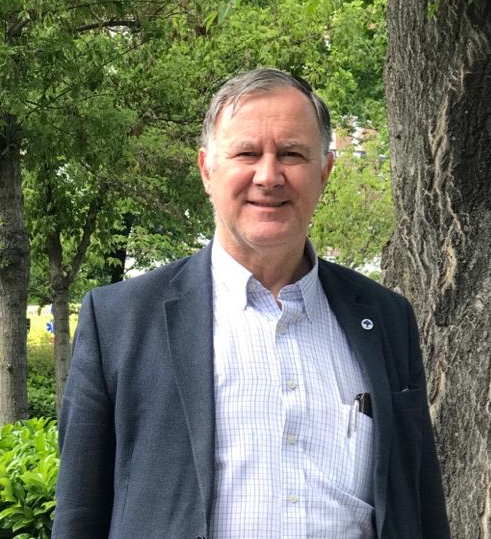
Prof. Miguel A.F. Sanjuán, member of the EPJ Scientific Advisory Committee, will be inducted into the Royal Academy of Sciences of Spain on Thursday, June 27th, at 6:00 PM. On this occasion, he will deliver the speech "Nonlinear Dynamics, Chaos and Complexity: Interdisciplinarity in the Sciences". The response speech will be delivered by Prof. Dr. Jesús María Sanz-Serna, the current President of the Academy. The ceremony can be followed on Youtube: [Real Academia de Ciencias Exactas, Físicas y Naturales de España] (https://www.youtube.com/@realacademiadecienciasexac6019/streams).





